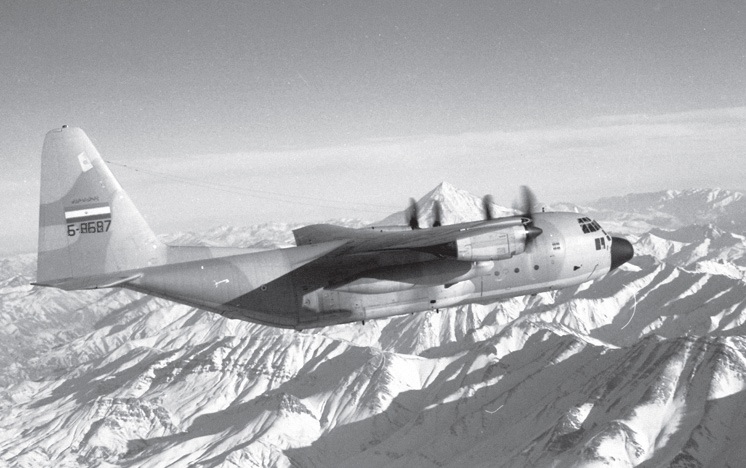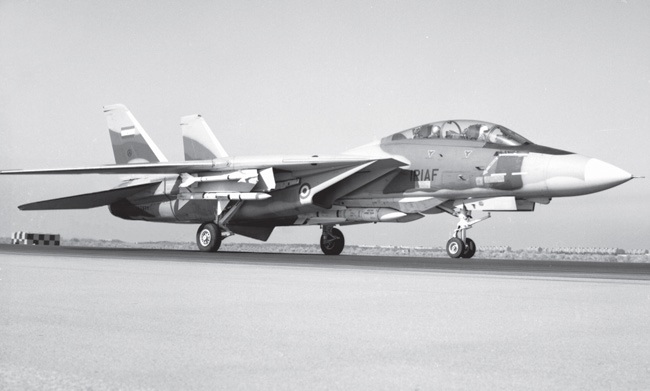Air Raid to Al-Waleed (12)
The Story of Demolishing Fighters and the Equipment in Al-Waleed Triple Military Bases Known as H-3
2016-3-14
Air Raid to Al-Waleed (H-3)
The Story of Demolishing Fighters and the Equipment in Al-Waleed Triple Military Bases Known as H-3
By: Brigadier General Ahmad Mehrnia
Tehran, Sooreh Mehr Publications Company
2010 (Persian Version)
Translated by: Zahra Hosseinian
Preparation for final operation
Morning of March 19, 1981, command of IRIAF orders Colonel Baratpour and Major Golchin to come to Tehran as soon as possible. Tomorrow is the Day of Oil Nationalization and an official holiday, then Nowruz holidays quickly begin, so it might be an important news! They immediately head to IRIAF headquarters with a Nissan Patrol and meet with Colonel Fakouri. In the meeting, citing to the recent approval of higher authorities, commander orders them to plan to the extent that they can implement mentioned mission for the third time immediately after the Nowruz holidays, at the mid-Farvardin, observing all security aspects and taking into consideration the sensitivities. Guests of commander declare their obedience and want to leave the office for doing planning and coordination when commander orders Major Baratpour take over flight leader and Golchin does not participate in the flight. Although he is a full-scale military and paying too much attention to regulations, but participation in such an operation is a proud that he cannot overlook it. Incidentally, this mission is somewhat dangerous and has high risk that he prefers to run the risk, rather than the young who were under his command. Therefore he says to commander: "I have no problem with Farajollah's leadership and completely trust him, but I ask you permit me to be in the fight group." Argument prolongs, but Golchin still insists and finally Fakouri agree.
Immediately coordination with the Operation Deputy and other relevant organs is done and it is decided to hold a briefing session between the commanders and operational deputies of units engaged in operation. For this reason, the responsible of Isfahan, Tabriz and Mehrabad air bases are asked to be present at the next meeting.
On the March 25, 1981, a group of staff officials and administrative units come gather in the justification hall of IRIAF headquarters command building in Tehran in order to consult. With the permission of the commander, operation deputy greets the audience and then explains the generality of mission. Then announce quite clear the task of each units to those who involved. The only unclear matter is day, time and place of operation. According to this announcement, the command post of Mehrabad air transportation should send two Boeing 747 tanker in Damascus and two Boeing 707 on the Lake Urmia during the going and returning of phantoms in the Holding, to provide fuel for bombers. In addition, it should send a C-130 aircraft to the closest borderline area, with radio eavesdropping facility and collecting electronic signals to take care of enemy's conversations and eavesdropping and to collect the latest information and make them available for decision-makers.

Multi-purpose transport aircraft C-130
Tabriz air base are bound to full air coverage and care for two aircrafts which will deliver fuel within insider border, especially during refueling operation. Also, a number of fighters of this unit located in Hamedan should provide the Alert[1] and air cover of region for possible coping with any enemy's aggression or preemptive move. In addition, a few minutes before the bombing Al-Waleed bases, this base is bound to bomb an important target in enemy territory with three F-5; at the same time, two other aircraft do harassment act somehow to attract enemy toward this deceiving operation completely and while engaged the enemy's radars and interceptors, F-4 bombers can refuel and return home in more relative security, after their mission.
Eighth Air Force Base of fighter[2] (Isfahan) also along with F-14 interceptor fighters or "Tomcat", as the most modern remote interceptor, cover total area of West; so that if the enemy's fighters track and intercept insider bombers, which are not able to do air war because they have bombs, immediately neutralize or destroy their air threats.

Modern remote interceptor F-14 fighter equipped with different air-to-air missiles
Hamedan Air Base officials, who attend the meeting and have a central role, should timely justify the forces participating in the operation, using their own discretion. The base is required to consider several sorties of air cover missions for crucial areas, in addition to dozens of aircraft which are heading south of Lake Urmia. It was, of course, noted that Colonel Izadseta with one of the tankers out of the country will closely monitor and manage the final stages of operation.
While the confidentiality of the aim, time, course of attack, and the way of operation is kept, participants being aware of the assigned task, without many questions to be raised and then return to their bases and wait for official notification of appointed day and time.
While Nowruz holidays are beginning, war does not allow all employees, especially those whose job are operational, go on vacation. However, it is tried to use Nowruz holidays a minimum to prevent the conquest of mental exhaustion.
Amir Second Brigadier General pilot Varasteh says:
"At the midnight of April 3, 1981, one of humorous and experienced senior officers, Jalil Khademolulama, who was Chinook helicopter pilot and served in the IRIAF headquarters, came to the Tabriz base and dropped in on me because we knew each other. "What are you doing here?" I asked. "I've come to attend in an important and confidential mission." He said. I insisted that he told me about it, but he said nothing. He persisted to go to Tabriz Sardroud radar site nightly. I finally took him there and returned. As usual, he, as a representative of the IRIAF Headquarters, apparently went to that site at the time to oversee the operation and prevent unwanted disclosure of it by radar agents. Next day, I don't remember what thing I was busied, but I remember that many flights were implemented for air cover. Later, I learned that a major operation has done in the West f Iraq."
To be continued…
[1]. In order to cope with any possible enemy's air assault, a number of ready-to- fly fighters and their pilots are placed near the plane with all equipment. Depending on the type and condition, these aircrafts should fly in the shortest possible time and be available for radar to be guided for dealing with intruders. This preparedness situation is called 'Alert', which takes 5 minutes for F-5 fighters.
[2]. Currently, the name of Eighth base of fighter, which has training brigade and a variety of aircrafts, has changed to "Shahid Babai Air region".
Number of Visits: 4073








The latest
Most visited
A section of the memories of a freed Iranian prisoner; Mohsen Bakhshi
Programs of New Year HolidaysWithout blooming, without flowers, without greenery and without a table for Haft-sin , another spring has been arrived. Spring came to the camp without bringing freshness and the first days of New Year began in this camp. We were unaware of the plans that old friends had in this camp when Eid (New Year) came.
Attack on Halabcheh narrated
With wet saliva, we are having the lunch which that loving Isfahani man gave us from the back of his van when he said goodbye in the city entrance. Adaspolo [lentils with rice] with yoghurt! We were just started having it when the plane dives, we go down and shelter behind the runnel, and a few moments later, when the plane raises up, we also raise our heads, and while eating, we see the high sides ...The Arab People Committee
Another event that happened in Khuzestan Province and I followed up was the Arab People Committee. One day, we were informed that the Arabs had set up a committee special for themselves. At that time, I had less information about the Arab People , but knew well that dividing the people into Arab and non-Arab was a harmful measure.Kak-e Khak
The book “Kak-e Khak” is the narration of Mohammad Reza Ahmadi (Haj Habib), a commander in Kurdistan fronts. It has been published by Sarv-e Sorkh Publications in 500 copies in spring of 1400 (2022) and in 574 pages. Fatemeh Ghanbari has edited the book and the interview was conducted with the cooperation of Hossein Zahmatkesh.

